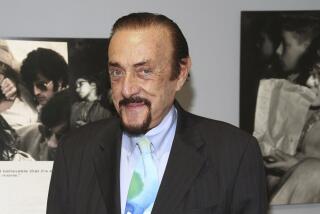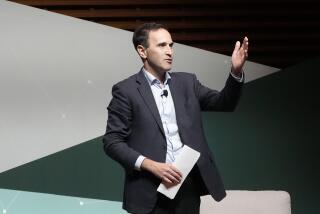Blowing the Whistle on the Experiment
In 1932, news of a new health program was circulated in Macon County, Ala., and hundreds of people showed up at black schools and churches for free blood tests. Six hundred poor, generally uneducated black males were selected to participate, including 399 who had syphilis and 201 who did not.
So began the U.S. Public Health Serviceâs âTuskegee Study of Untreated Syphilis in the Negro Male,â a study that lasted for 40 years. During that time, those 399 sick men were denied treatment and allowed to get progressively sicker--even after penicillin therapy had become commonplace.
Once a year, the men received âa white tablet for pain and a little vial--I guess it was some type of tonic,â according to congressional testimony from survivor Henrich Shaw in 1973. They underwent blood tests and painful spinal taps, but no real treatment for their syphilis; apparently, their autopsies were far more important to researchers.
According to further testimony from Shaw and others, these men were never told they had the highly infectious disease, much less that they were participating in a study that would deny them treatment for it. âI had bad blood,â said another survivor, âand they said they were working on it.â
Dr. Vernal G. Cave, then-director of the bureau of venereal disease control at the New York City Department of Health and a member of a government-appointed panel that reviewed the study, testified in 1973 that even after participants began to show grave illness and a death rate nearly double that of control subjects, the study continued. After penicillin therapy was in widespread use, continued Cave, âwhether due to bureaucratic inertia, or zeal to publish more papers, or a blocking out of ethical principles or--and we must consider this aspect--a sinister climate of racism, the study continued.â
Cave, now a physician in private practice in Brooklyn, adds today that the study was not just morally untenable but scientifically flawed as well. âThe study was initiated by some people who (failed to) develop careful outlines as to what the study should be like and what possibly could be derived from it,â says Cave, also board chairman of the Bedford-Stuyvesant Family Health Center. âThat was not done. And throughout the study, there was no consistency. Autopsies were done under poor conditions, and there was not good pulling together of scientific material.â
Enter Peter Buxtun, a Public Health Service employee in San Francisco in the â60s, who heard about the study from a colleague and sent off for documentation. (The study had been discussed fairly often in âsemi-obscure but real medical journals,â Buxtun told The Times.) He read the materials, felt âthese were not volunteers but dupes,â and sent a letter off to a top Health Service official expressing his concerns.
For several more years, Buxtun pressed his case. He spoke to doctors, lawyers and journalists. âNobody listened, â says Buxtun, today an antiques wholesaler. âThe opaque lids dropped in front of their eyes. Then, finally, in 1972, I was out with my pal Edith Lederer, who was a reporter for the Associated Press, and she showed the material to her boss, who made her give it to someone on the East Coast.â
On July 25, AP reporter Jean Heller broke the story, and newspapers around the country immediately ran their own articles and editorials. In his highly regarded book about the study, âBad Blood,â historian James H. Jones cited assorted headlines that charged everything from âNightmare Experimentâ to âOfficial Inhumanity.â A later article in Ebony Magazine blared: âCondemned to Die for Science.â The study was halted, a government-appointed advisory group put it under review, and several months later Sen. Edward M. Kennedy (D-Mass.) held a series of hearings on human experimentation that kept the issue in the limelight.
Survivor Charles Pollard, meanwhile, had contacted attorney Fred Gray, and in July, 1973, Gray filed a $1.8-billion class-action suit. Gray, who had attained national prominence by first defending Rosa Parks in 1955, then the Rev. Martin Luther King Jr. a while later, settled the suit out of court. According to Jones, who had helped Gray on the case, the government agreed to pay about $10 million. The sum of $37,500 was to go to any syphilitic subject still living, with varying lesser sums to control subjects and heirs.
Gray, who is still in practice in Tuskegee, spent the next several years trying to find those people. According to press reports in 1981, he and his staff found nearly everyone.
Jones says very few Public Health Service officials refused interviews for his book, âBad Blood.â The historian, today an associate professor of history at the University of Houston, says some officials were even eager to talk âbecause they felt the press had no appreciation for what was involved and were using a 1970s moral prism through which to view something from an earlier time.â
With Grayâs help, Jones was also able to interview half-a-dozen survivors on tape and for the record, and others off the record. But the most important oral history he did, Jones says, was with nurse Eunice Rivers, the woman who stayed with the project throughout nearly its entirety and who âsuggestedâ playwright David Feldshuhâs Nurse Eunice Evers. After nearly a year of pursuit, she finally agreed to meet with him, and Jones was able to interview her over several days.
How did Rivers feel about her assignment? âI would like to think there was more ambivalence at the time but Iâm not sure there was,â says Jones. âA variety of factors made it very difficult for her to see the experiment in moral terms (such as) the nurse-patient relationship--she was taught to equate good nursing with following the doctorâs orders.â
But Rivers eventually spoke with considerable candor, he says, and it became clear âthat the explosion of negative publicity that greeted the public disclosure of the experiment had grieved and wounded her deeply. I think she had always seen herself as a moral woman and always found it possible to view her role in a benevolent light. I have moral certainty that she loved the men in the study.â
Jones, who is now writing a biography of sex researcher Alfred C. Kinsey, indicates Feldshuh isnât the first person to see dramatic potential in the Tuskegee study. A film option on âBad Bloodâ in the early â80s fell through, he says, but he signed a second option two years ago with a New York-based film producer. Negotiations on that project, he says, are âcurrent and ongoingâ in Hollywood.
Jones says he hasnât seen Feldshuhâs play, âbut I think that a theatrical drama is a good vehicle to put these issues before the public so that the dialogue can continue.â And so does producing director Bonnie Morris at Minneapolisâ 220-seat Illusion Theater, which hosted three readings of the play. âThe arts is one of those places where we can have a collective memory,â says Morris. âThe way we make sure these things donât happen again is that we donât forget them.â
More to Read
Sign up for Essential California
The most important California stories and recommendations in your inbox every morning.
You may occasionally receive promotional content from the Los Angeles Times.










